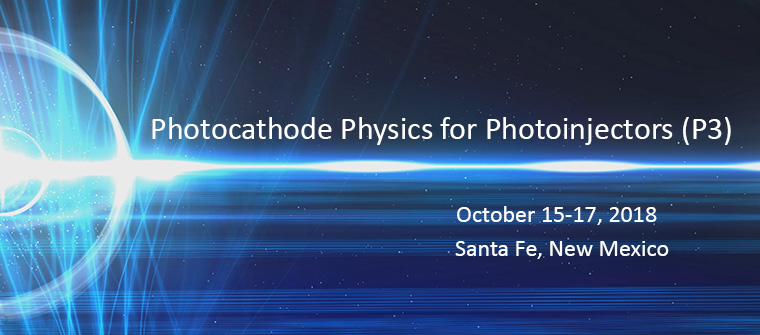Speaker
Description
Measurements of the spectral dependence of the mean transverse energy (MTE) from single crystal Mo(100) and W(100) photocathodes display a non-uniform increase with excess photoemission energy. The observed behavior is attributed to the bulk electronic band structure of the emitting states in the Γ-H direction of these body-centered cubic (bcc) metal crystals; specifically, the influence of the well-known ‘lens’ in the band structure about the (100) emission direction. Differences in the emission characteristics of the two photocathode materials are explained by the atomic number increase from Mo to W which requires relativistic effects to be included in the DFT-based electronic structure calculations for Tungsten.
The spectral MTE values for both the Mo(100) and W(100) photocathodes were extracted from an extended analytical Gaussian beam propagation simulation of the employed solenoid scan technique that uses a 3.0-5.3eV (235-410nm) laser-based, tunable UV radiation source. The experimental data are compared to simulations of one-step photoemission using an exact quantum solution to transmission through and over a triangular barrier evaluated by R.G. Forbes and H.B. Deane [Proc. R. Soc. A 467, 2927 (2011)]. This analytical solution has been extended into the transverse dimension, using conservation of transverse momentum in electron emission, to include parabolic electronic bands with cylindrical symmetry; that is, with a longitudinal effective mass mz differing from the transverse effective mass mT isotropic in the plane of the crystal emission face. In addition to including the local density of the emitting states (multiplied by the appropriate Fermi-Dirac population distribution) in the photoemission simulation, the vacuum density of states are also now included; that is, the density of the recipient states for the emitted electron. In agreement with this emission analysis, the measured spectral dependence of the quantum efficiency (QE) for both single-crystal metal photocathodes does not follow the Fowler-DuBridge quadratic dependence with excess photoemission energy – an effect directly related to the influence of both the local density of states of the emitting electronic bands and the vacuum density of states.




